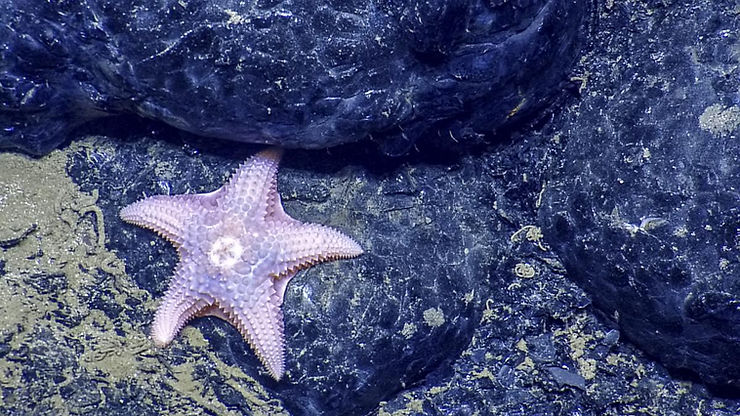By: Isabelle Wang
In a Lovecraftian horror, a lava-licked realm thousands of feet beneath the ocean, volcanically powered exhaust ports known as hydrothermal vents launch jets of water that reach temperatures of up to 700 degrees Fahrenheit. The surfaces and edges of these vents have been known to host living creatures such as fungi and bacteria, but never would scientists expect there to be animals.
But, in July, when a diving robot turned over volcanic bedrock pockmarked with hydrothermal vents, it revealed that there have been animals, including many tubeworms, which are parasitic tube-like worms. “This is the first time that animal life was found below the surface” of hydrothermal vents, said Monika Bright, an ecologist at the University of Vienna and lead scientist on the expedition.
Microbial life was already known to exist in these cavities, but the fact that these animals survived within the vaults of volcanic rock in near complete darkness, is just incredible due to the extreme temperatures. “The deeper you go, the warmer it goes, the less oxygen there is, the more toxic chemicals are in it,” Dr. Bright said. “It’s very shallow, but it’s still below the Earth’s crust.”
Many people think that this is a very unexpected discovery, but some think that this discovery is perfectly reasonable. For example, Julie Huber, a marine geochemist and microbiologist at the Woods Hole Oceanographic Institution in Massachusetts said, “I think it makes perfect sense, the shallow subseafloor, where temperatures are likely cool enough for animals to survive, is what I think of as a ‘subseafloor conveyor belt’ for microbes, nutrients and, now, animals.”
Even though the temperatures are extreme, these vents are home to many fascinating creatures. Tubeworms, which start as a wriggling larva before becoming immobile adults that grow to several feet in length and that are fed by sulfur-eating bacteria living in their guts, are common in these vents. Dr. Bright had suspected that these wiggly worms could also be found beneath the vents. “It’s kind of a really crazy idea I had,” she said. To find out if her hypothesis was correct, Dr. Bright led a team aboard Falkor, a research ship owned by the Schmidt Ocean Institute. The researchers sailed to a volcanic area near the East Pacific Rise, a spreading seafloor schism that runs roughly parallel to South America.
Near the East Pacific Rise, they set loose SuBastian, a remotely operated vehicle with two armlike appendages that drills, scoops and saws can be affixed. It approached the frothing vents, politely flipped some volcanic rocks and peeked inside. SuBastian found wriggling creatures, mostly tubeworms.











